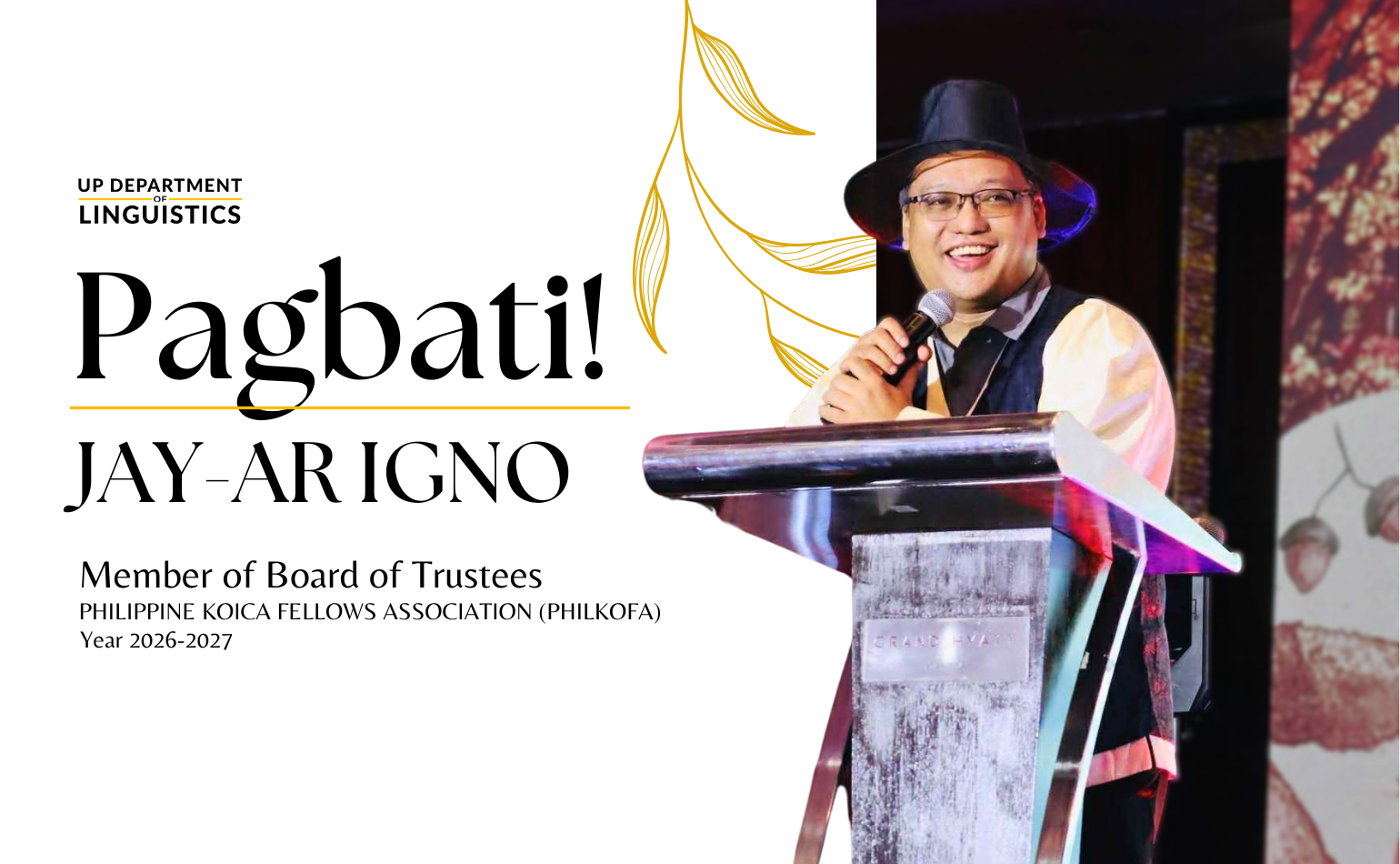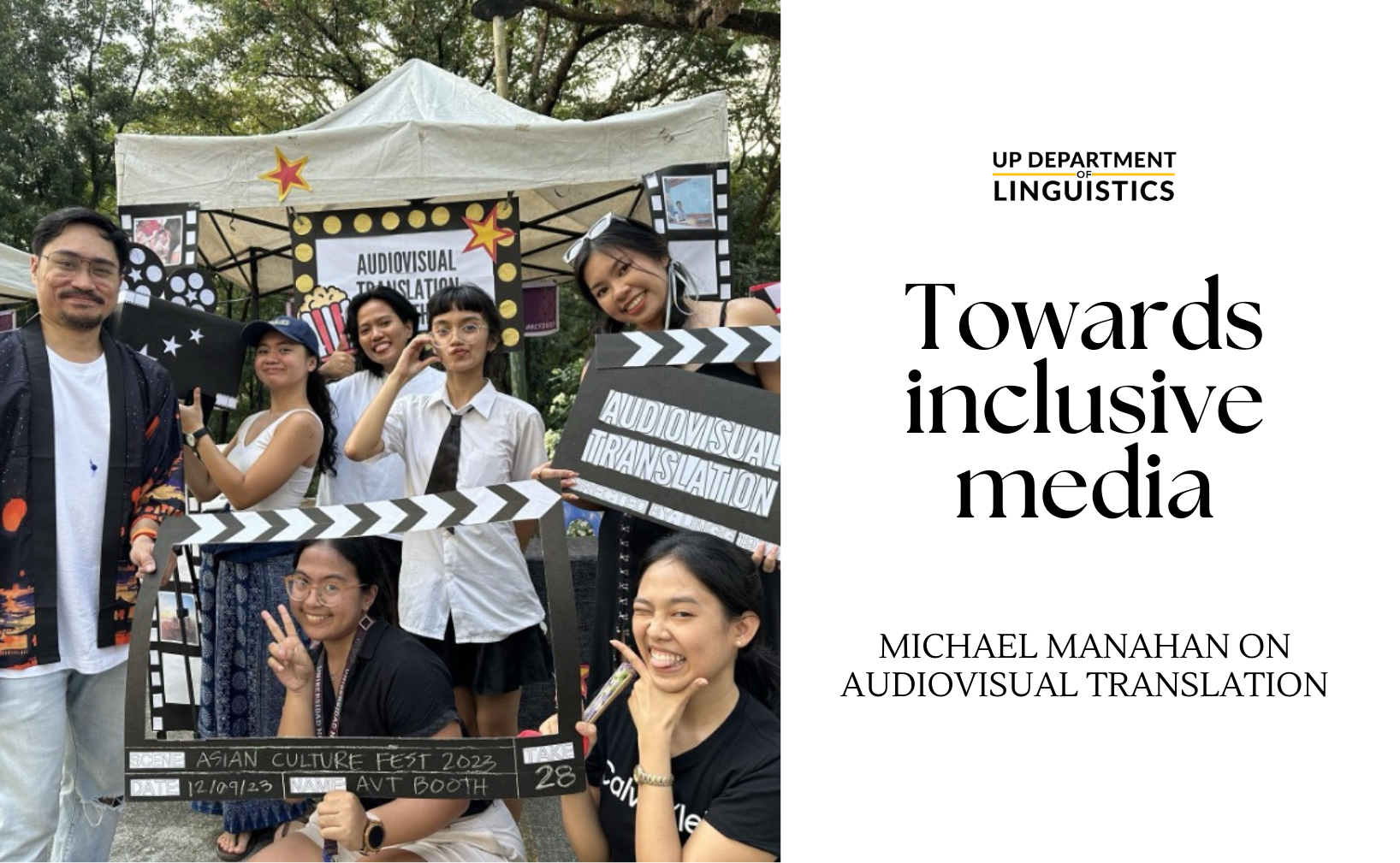
This International Translation Day, we feature Lecturer Michael S. Manahan and his work on subtitling, dubbing, and audio description (AD). Read on to find out his background and process!
Tell us a little bit about audiovisual translation. How/why did you become interested in this endeavor?
Audiovisual translation (AVT) involves translating audio and visual content, such as films, TV shows, and digital media. This can include subtitling, dubbing, and audio description (AD) to make content more accessible. While I was familiar with subtitles and dubbed shows, I didn’t initially realize that AVT was its own field. I got curious about AVT after a company emailed me, asking if I wanted to work on subtitling in Filipino. At the time, I was saying yes to every opportunity, so I gave it a try. The project turned out to be for a major streaming platform, and I loved it. It allowed me to dive deep into the material, contribute to translating culture, and create meaningful, accurate subtitles for the Filipino audience and Filipino language users. It feels like a game, especially when I come across those nearly untranslatable expressions which made the challenge even more fun. Since subtitling often involves text reduction, my experience with the Natural Semantic Metalanguage (NSM) approach in semantics has been a great help in crafting nuanced translations. This only fueled my interest even further.
I got into dubbing when another company had an open call for adaptors. Since the training was free, I jumped at the chance. That’s when a dubbing director recruited me for further training, and after completing it, I began working on dubbing scriptwriting projects. Later, the same director introduced me to another director for audio description writing. And things took off from there.
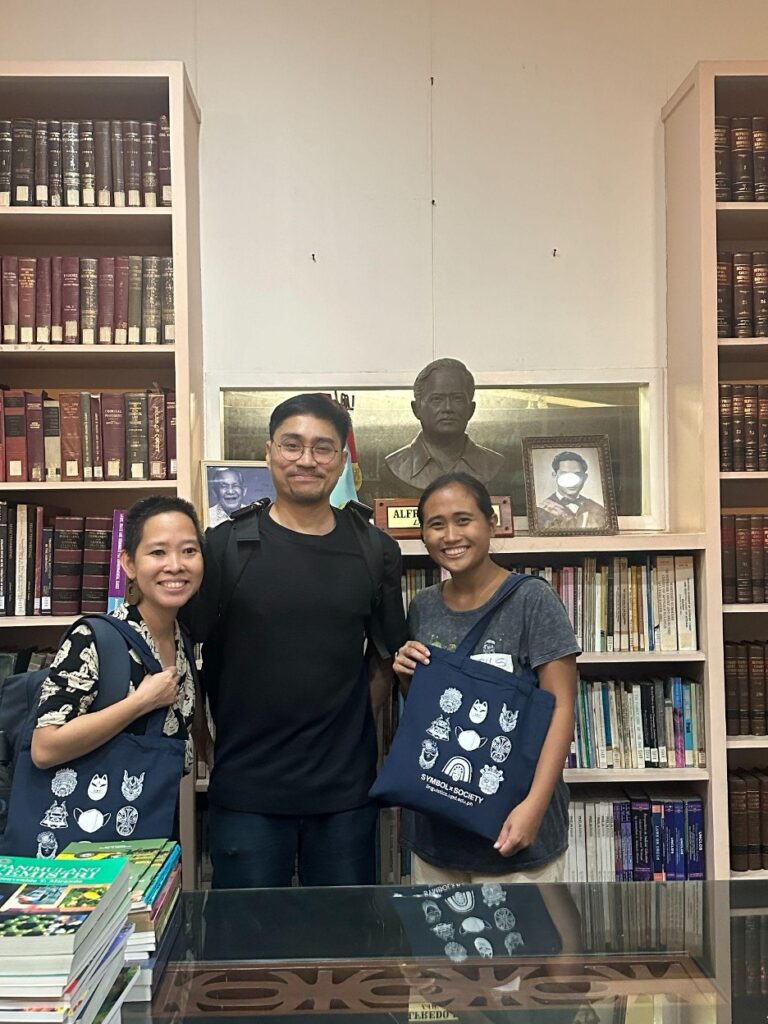
Can you walk us through the translation and description process?
The process begins with understanding the source material, both the visual and auditory elements, so that the translation or description reflects not just the words, but the cultural and emotional context among others. In subtitling, for example, subtitle authors have to deal with time constraints and readability, often condensing speech while ensuring that essential meaning is retained. In dubbing scriptwriting, the challenge lies mainly in adapting the dialogue to match the lip movements of the actors while ensuring that the translation stays true to the original tone and intent. In audio description, the focus is on providing meaningful, vivid descriptions of visual elements for blind or visually impaired viewers without interrupting the flow of dialogue. Each step requires careful attention to both the technical limitations and the audience’s needs.
What are some of the common challenges encountered in audiovisual translation, and how does a translator overcome these?
One of the biggest challenges is making sure that subtitles or dubbing stay in sync with the audio and visuals. This often means condensing dialogue while keeping the heart of the message intact. Another tricky part is dealing with cultural references, idioms, or humor that don’t always have direct translations. Translators get creative here, adapting the content to keep the original intent while making sure it connects with the target audience. In audio description, one of the main challenges is figuring out how to describe important visual elements without talking over key dialogue or sound effects. It’s all about timing and fitting vivid, meaningful descriptions into the spaces where they won’t disrupt the flow of the story. Another challenge is making sure the audio descriptions capture the right mood or tone of the scene, so visually impaired viewers experience the same emotions as sighted audiences. To tackle this, AVT translators often work closely with project managers, quality checkers, and directors or once the material has been released, use feedback from the viewers to refine their future projects and make sure it’s as engaging and accurate as possible.
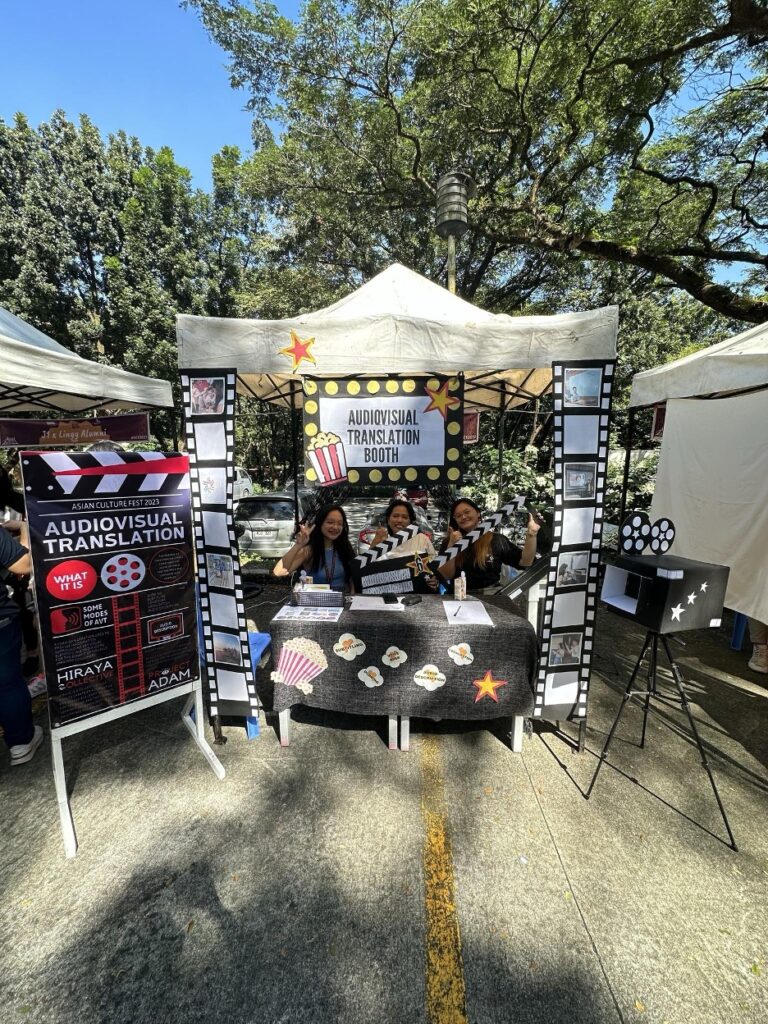
What are the main objectives and activities/output of the courses offered by the Department that focus on audiovisual translation/audio description research?
Here’s the course description from the course syllabus of our Lingg 197 class:
“Lingg 197 (Special Topics in Linguistics: Audiovisual Translation) provides students with a comprehensive understanding of audiovisual translation (AVT), with a focus on creating both monolingual and interlingual AVT. Students will gain practical skills using an open-source tool, while also exploring the cultural, linguistic, and technical challenges involved in various types of AVT. Through hands-on exercises and critical analysis, students will learn to apply effective strategies to overcome these challenges and produce quality translations for diverse audiences. The course also aims to develop students’ ability to critically evaluate existing AVT works and engage in theoretical discussions within the field.”
For subtitling, I’m thinking of creating a style manual because the current resources often miss some of the subtler aspects of subtitling. We need a guide that blends spoken and written language since we’re turning verbal communication into text, and it should be flexible enough to adapt to the evolving language, especially with more modern content. This includes developing a Filipino orthography that feels fresh and up-to-date.
For audio description, I’m looking forward to continuing my work with Hiraya Collective for the Blind as more opportunities come up, and I’m really excited to help raise more awareness about AD. During the Midyear Term 2024, Hiraya supported my Lingg 125 (Introduction to Field Methods) classes by offering Disability Sensitivity and Awareness Training, and they even helped with our AD research as resource persons and informants. I also see a great chance to bring audio description into spaces at the University. AD isn’t just for digital platforms—it can help describe buildings, museums, and exhibits, making these spaces accessible to more people. We need more accessible spaces and this should really be the norm.
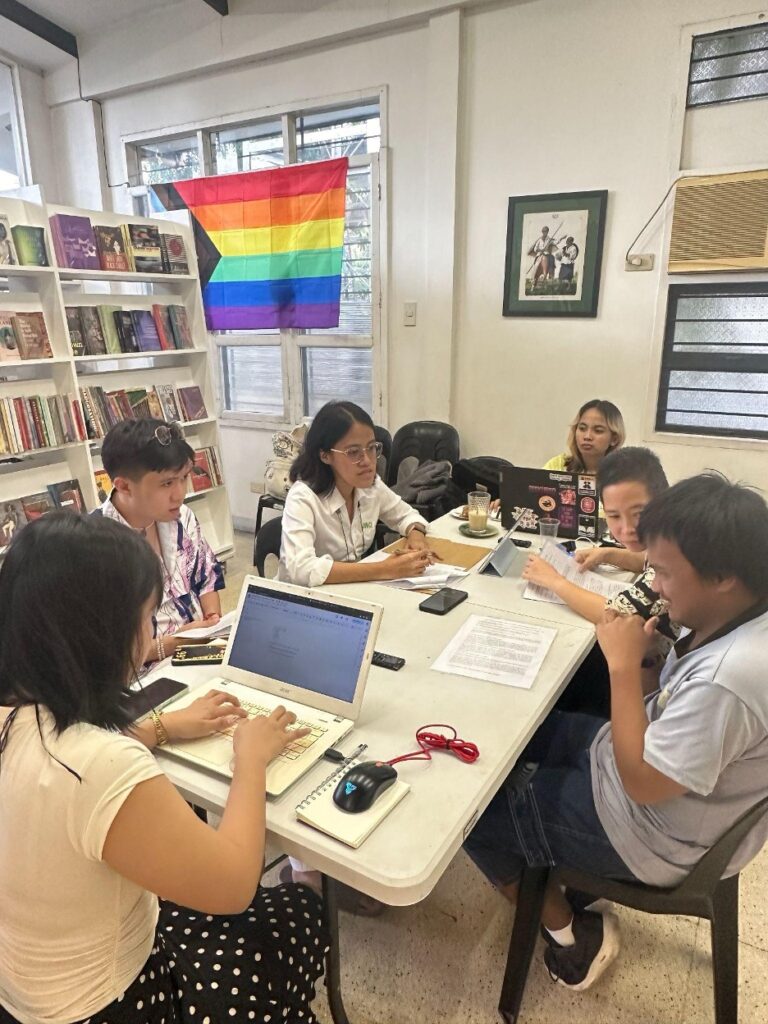
Based on your experience as instructor of the said courses, can you share a bit about your students’ general insights or realizations regarding audiovisual translation?
Many of my students realize that audiovisual translation is not simply a linguistic exercise of translating words and expressions, but one that involves deep cultural negotiation and technical expertise. They are often surprised by the amount of creativity required to adapt content meaningfully for different audiences. Moreover, they gain a strong sense of responsibility toward making media accessible, particularly in the context of audio description for people with disabilities and making more thoughtful translations. This understanding fosters a greater appreciation for the translator’s role in shaping how content is perceived globally.
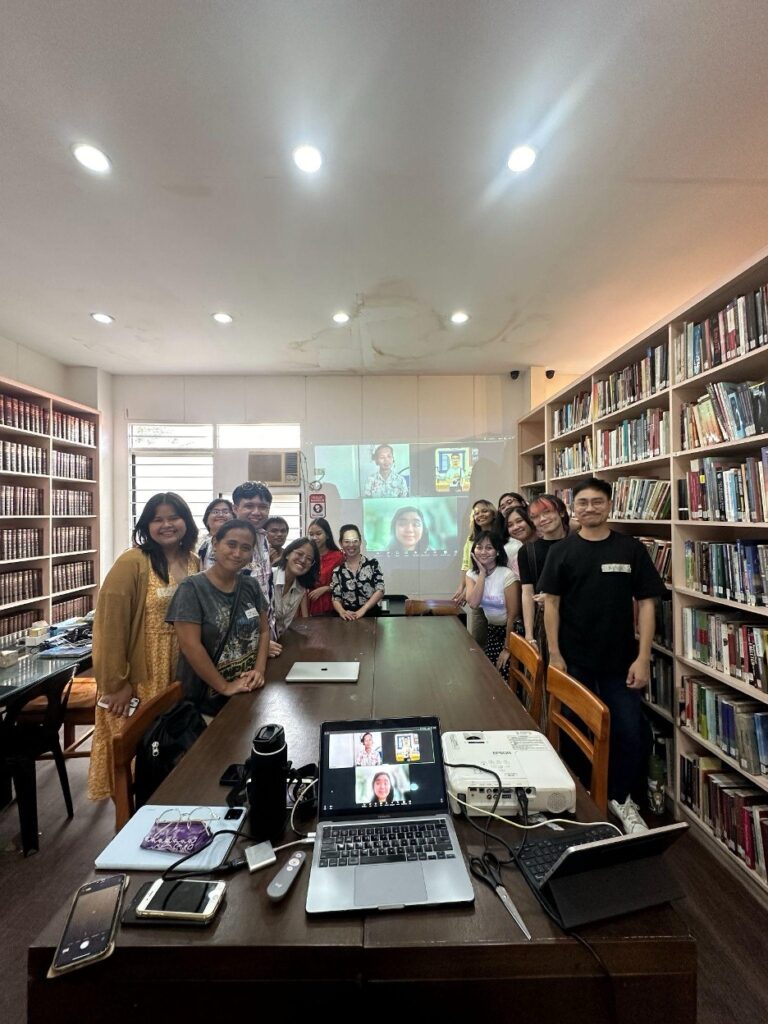
Why is it important to develop an understanding of this kind of translation work (and advocacy), both for Linguistics students and aspiring translators?
Understanding audiovisual translation is crucial because it sits at the crossroads of language, culture, and technology. For Linguistics students, it provides practical insight into how language functions in real-world, mediated contexts. For aspiring translators, it’s an opportunity to engage with rapidly evolving media industries while addressing the ethical responsibilities of accessibility. Developing this understanding of AVT fosters a commitment to cultural sensitivity, accessibility, and inclusivity in translation work, making sure no one gets left behind.

Published by UP Department of Linguistics

